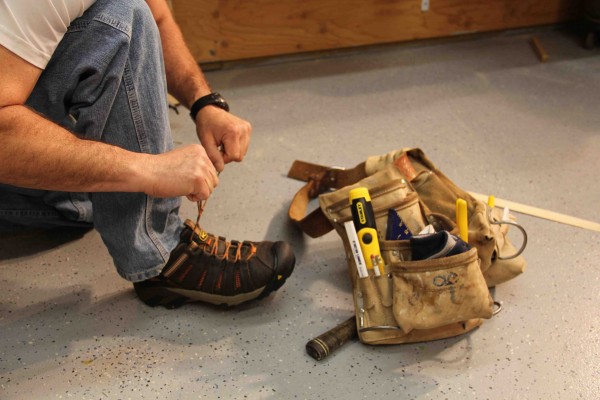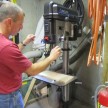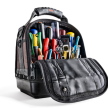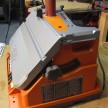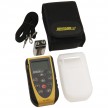How To Choose A Tool Belt
Durability, Fit and Finish:
Quality – material, seams, stitching and rivets. Belt and buckle adjust ability, material and comfort
An important consideration you need to remember as you are choosing a tool bag is to ensure that the one you choose is of high quality.
My crew all felt and agreed that the oil tanned leather rigs took this category. All of these rigs were well-made, solid belts and were built like tanks. They all basically featured with double roller adjustable belt buckles, double stitching, heavy duty rivet construction, and double reinforced leather pockets for years of abuse.
NOTE –
It’s important to note that my crew did not like the oil tanned leather belts that had “fixed” bags. They felt that these bags were uncomfortable and severely limited their individual customization and also had smaller tool and fastener stowing capacities. We surmised that these belts were designed and set up for a framer who carries / stores minimal tools and loads up on fasteners.
What about Nylon style bags?
I was the only stand alone who preferred a canvas or nylon style bag for the lightweight comfort. Even with a majority vote I held my ground, I’m the oldest of the group and the only one, so far, with lower back issues. I tend to gravitate to the lightweight nylon rigs.
Nylon rigs can be high quality too and I suggest if you’re considering one, look at the thickness of the bag material, the stitching [single or double] and any features that allow you to customize the rig: handles, padded belt, suspender loops, hammer and tape holders.
The bag you choose will be carried on a regular basis and will need to competently hold all of the tools you need. It’s important to go with a high quality bag that is durable enough to take all the abuse that comes along with the territory.
Look for bags made of heavy-duty materials so you don’t have to worry about the bag blowing out.
Lightweight Leather or Suede-like Rigs:
The Klein 42246, AWP 0263949 and the McGuire-Nichols 495-1 all remind me of my first tool bag, which did not last me that long due to pocket blowouts. They are all made of soft leather with heavy rivets and mostly double stitching. We felt that these bags were beefy enough to be called job-site worthy but most of us tended to lean toward the more heavier leather bags.
Comfort and Fit:
The tool belts that we looked at ranged from having nylon to “pleather” / padded to all leather belt. All of them had sturdy buckle is all leather and has a real sturdy metal buckle clip and offers no padding.
A large metal belt buckle is something that we all agreed could dig into your belly when leaning over or worse scratch a finish surface. We tended to lean toward the tool belt that allowed customization by allowing the user to be able to either spin the buckle to the rear or slide it behind one of the two attached tool bags.
With all of the bags we looked at the rivets were fairly low profile and there were no other sharp edges with exception of hammer loops and combo square holders.
One thing we noticed is that all of the tool bags the oiled tan leather rigs were well constructed and designed for the long haul but were heavy. Their main bag compartment stay wide open and maintains their shape which is a plus when wearing gloves.
The soft leather bags have “low profile” main compartments that lay flat and are able to be adjusted by sliding them over the belt.
Many of the tool bags allowed the main compartments to be slide around. Ability for the wearer’s hip to be able to adjust the rig by sliding their bags into the most comfortable position it a trait we liked the most!
Customization, Capacity and those Damn Lefties!
One consideration you need to keep in mind when trying to choose the right tool bag is to choose a bag that offers you plenty of space to carry what you need.
It’s important that your bag has room for all the most essential tools that you’ll use on a regular basis. A major disappointment to us was trying on a tool bag that did not offer a single pencil or marker holder. I’m sure you could store a half dozen markers in a larger pocket but we felt that every trade uses marking tools and this was an important enough tool to have a dedicated pocket and that pocket should be located front and center of both the left and right bags.
If you’re like me, look for a bag that has plenty of pockets and compartments so you can make sure all your favorite tools can easily be carried around with you.
Capacity of the bag is important. Too heavy or bulky to wear, you won’t use it, which means you’ve wasted your money. You want to choose a bag that offers great organization so it makes the most of all the space. This will make it easier for you to carry the bag around with you on a regular basis.
Personally I really gravitate toward a bag that offers individual tools holders inside the main compartment. Only two tool bags offered this option, the Klein Tradesman Pro and the AWH 1LL-803-HP the others just had large main compartments. Large compartments mean the tools eventually settle to the bottom and get clustered. I’m into organization and like them separated.
Customization of the tool bags was also an important topic and one that resonated with my lead carpenter Ethan. Ethan is a leftie and prefers tool bags that offer. “I’m not a huge fan of any belt that does not allow me to customize attached items.”
Tool bags with identical tool bags allowing identical and ambidextrous set up were preferred. Our left-handed lead carpenter liked this and always looks for tool bags that allow and ambidextrous set up.
“Tool rigs with tape measure holders that could be placed anywhere on the belt, leather hammer loops, and duplicate pockets for knives, pencils and nail sets on both bags are always preferred.”
The gang as a whole did not like the permanently fixed bags or metal hammer loop affixed to the belt. While some were somewhat moveable it hampered customization and individual placement preference.
Some tool rigs offer a tape holder in the front with a strap to lock the tape measure in place – I always find this annoying and cut these straps off. The strap gets in the way, usually when I’m trying to “re-holster” which slows me down.
Where manufactured
While it didn’t matter to some of the guys others really felt compelled to lean toward a tool bag made in the US.
The soft Klein bag is “made in the USA with US and imported parts.” To me that means “mostly made in the USA.” Others were made in India and most of the tool bag rigs were made in Mexico.
Which trade would best utilize the belt
We all agreed that these rigs would be good for any carpenter but with all of the bags we looked at it really depends on your job scope and working style. The lightweight, lighter leather and low profile bags would be good for trim carpenters, handymen and painters. The Klein was designed and set up for electricians but are a nice bag. [just wish it had a slot for my carpenter pencil or sharpie.]
This tool rig has beefy rivets and the belt system padding was comfortable and provided 100% coverage to help distribute the tool weight. It has built in loops for suspenders and also two handles to carrying or hanging – we liked both!
How To Choose A Tool Belt:
Choosing a tool bag is like choosing girlfriend or buying a car. I would be so conceited that I would pick out a rig for you and I certainly would not want you choosing mine… were still talking about girlfriends, right?
There are many factors for deciding to go with one rig over another. I personally made my decisions based on weight, dedicated pockets and customization or orientation of the accessories.
I started out my career using a soft leather [it was inexpensive] tool belt, ended up with a heavy leather rig and recently ended up hanging it up and opting for a light weight nylon style rig with a padded belt. I find the padding helps spread out and distribute the weight better for my aging and some days aching back!
What would I choose?
Well, if I could take the weight and capacity of the Bucket Boss rig with the comfort and evenly distributed weight support that the Klein Tradesman PRO padded belt offers and then somehow work in the longevity and durability of those very cool oil tanned rigs . . . I’d be in heaven!
Here’s what the guys at my job site had to say:
“I like the all leather tool belts for comfort and durability. They have the right size pouches for nails in one pouch, even with a glove on. A place for my tape, square and metal loop for hammer. I’ve had mine over 20 years have been given new one’s for Christmas or birthday but I always go back to my old leather friend.”
“I’m a carpenter, 38 years. Started with a cloth apron. Couldn’t carry enough tools, soooo, I went with the leather one with the tape measure in the front. It was heavy but worked fine except on humid days on the roof. LOTS of sweat ! For the last 10 or 12 years I’ve been using the canvas type. Light, no sweat and the pouches are able to slide along the heavy duty belt. The hammer holder is in the back where it doesn’t whack me in the back of my knee with every step.”
“Quality, I need a belt that evenly disperse weight. I run with the occidental leather pro leather framer bags. This belt fits my needs perfect, I feel lost if I’m working with out it!”
“Comfort and practicality is most important. You have to have good suspenders that don’t rub and take weight off the hips. It has to be practical in that you can have a wide variety of tools and its not a jumbled mess.”
“I think this is s tough subject depending on what type of work you do, each job needs its own setup. I feel that the impact driver is a tough to carry and would like to see a solution for that – I use it a lot.”
“Weight is the biggest issue for me. I find myself using my suspenders for a couple months then when my shoulders get sore I take them off for a couple of months till my hips and lower back get sore. When I first started building I used to load up my tool bags and fill up every pocket available with chisels screwdrivers ect. I started out with affordable nylon bags but I would go through them every couple of years, they just seem to fall apart they don’t age very well. Eventually I went big an got the occidental bags for the long haul. I’ve had my oxy’s for 8 yrs Now I fill it with the tools I need for the job. Weight is still a concern I’ve been trying to trade in my heavy metal tools for plastic, aluminum and titanium tools.”




